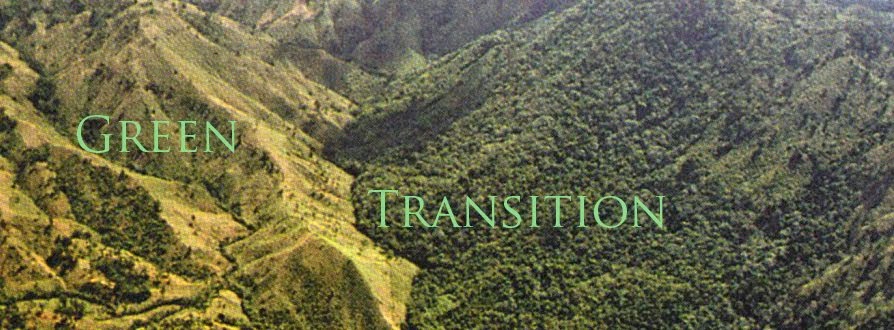 |
| Have CSERGE developed Earth's very own Deep Thought? |
The large swathes of peatland that now
exist in the circum-arctic region are believed to have developed during the
late Pleistocene and early Holocene as ice sheets retreated and the climate
became warmer and wetter. The hypothesis that climate has been the prime driver
of peat formation is supported by Macdonald et al (2006) who use radiocarbon
dating to establish the timing of peat development across northern Europe. They
find that peatland expansion across all continents occurred in a pattern that
reflects fluctuations in global temperatures with initial expansion during the Bølling-Allerød warm period (c.14.7–14.5 ka bp) slowing during the colder
conditions of the Younger Dryas (c.12.65–11.5 ka bp) before rapidly increasing
after the end of the Younger Dryas at around 11.5 ka bp.
Evidence from the UK, however, indicates
anthropogenic impacts have also been important causes of peatland formation.
For example, Oldfield (in Walker and West (eds) 1970) has shown that Blelham Bog in the Lake District was artificially established
in the early 19th century as a result of human flooding of former
peat cuttings with subsequent stream diversion throughout the 19th
century encouraging further silt deposition and, hence, peat formation.
While the contribution of humans to
peatland therefore appears variable, it is clear that anthropogenic impacts are
the overwhelming drivers of contemporary peatland destruction. In Europe alone,
it is estimated that out of a total mire and peatland area of 617.000km2, 52%
has been converted over last century with the main areas of conversion
including agriculture (50%), forestry (30%) and peat extraction (10%) (Byrne et al 2004). It's clear that future land-use decisions should preserve this
significant carbon sink, but how can we ensure that such decisions are made?
Here I believe that recent developments in
environment-economy modelling can, again, be instructive. Work is being undertaken
at The Centre for Social and Economic Research on the Global Environment to
develop integrated land-use models that will allow decision-makers to measure
the impacts of land-use changes not only in terms of changes in market-priced
commodities, such as agricultural output and timber, but also non-market
benefits such as the recreational services of forests and, importantly, the
carbon sequestration benefits of peatland.
Bateman et al (2013) provides an example of
how such modelling developments can promote pro-peat land-use decisions. The
authors use a series of decision models to explore how land use patterns change
under various scenarios defined in terms of the magnitude of climate change and
the strength of environmental regulations. Valuation models are then used to
determine the magnitude of changes in market and non-market benefits that are
the result of land use in each scenario. The images below show the results from
the ‘world markets’ scenario in which environmental regulation and policy are
weakened unless they coincide with improved agricultural production. Looking at
the maps, the difference between market (agricultural) and non-market
(ghg emissions and recreation) outcomes is explicit. Chopping down trees and
converting peatland to agriculture would be expected to increase agricultural
output but the maps below show how this also causes increased carbon emissions and losses in recreational benefits (going for a walk in a field of potatoes
isn’t quite the same as going for a walk in an ancient forest).
 |
| Images from Bateman et al (2013) |
These maps might look nice but
what’s the point of this? Bateman et al (2013) show that basing land-use
decisions solely on market values will have considerable detrimental effects
and, while this result is pretty unsurprising, the model developed by CSERGE
makes the point impossible to ignore.
I do, however, have some reservations. The novel
aspect of Bateman et al’s modelling approach is the combination of a land-use
decision model with a valuation model. This allows all the impacts of land use
changes to be expressed in terms of a single monetary unit (note that the maps
above are all in terms of £/ha/yr). To me, there seem to be two issues with
such an approach. The first is that this means that modelling results are
inevitably going to depend on the monetary values that are placed on non-market
benefits such as the carbon sequestration services of peatland. I’ve written
before about the importance of such environmental valuation but it’s important
to recognise that the model’s conclusions will always be contingent on the
valuation methods used.
While I believe that environmental valuation
has many benefits, my second, and more significant, concern is that policy makers place too much emphasis on such modelling exercises. I worry that politicians are far
too keen to hold up the results of such models as facts that make further deliberation redundant, ignoring that the
results are actually contingent on subjective valuation method decisions.
So yes, environment-economy models such as
that developed by CSERGE can aid pro-peatland decision-making but it’s vitally
important to use them correctly as tools to inform further debate rather than
infallible oracles that always produce The Truth.
[1] To put the peatland figure in context I used NASA’s estimate of the
total carbon stored in tropical forests (247 billion tons) and used this converter to express the figure in petagrams. I am pretty ignorant about
comparative carbon storage estimates so if this appears way off to anyone
please let me know!




.jpg)
.png)